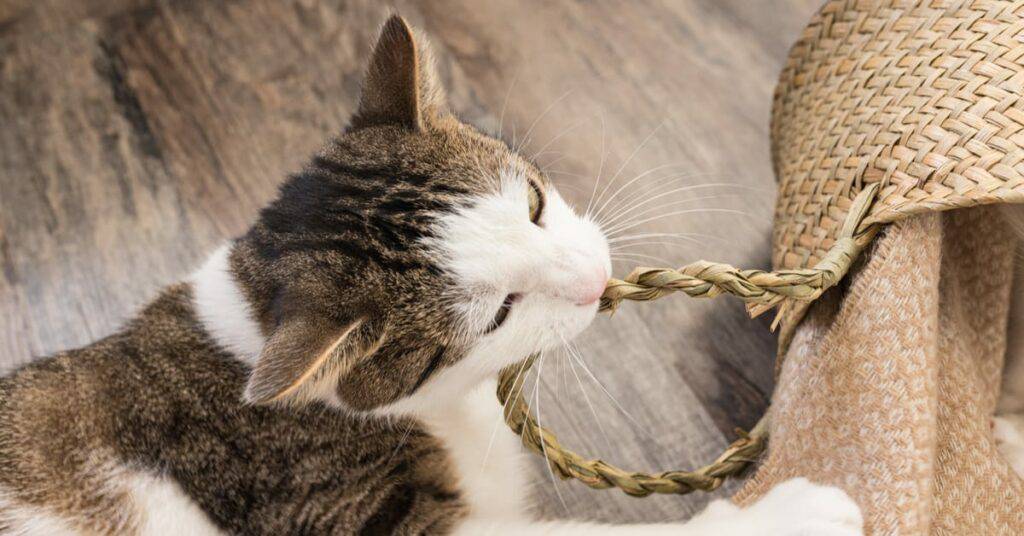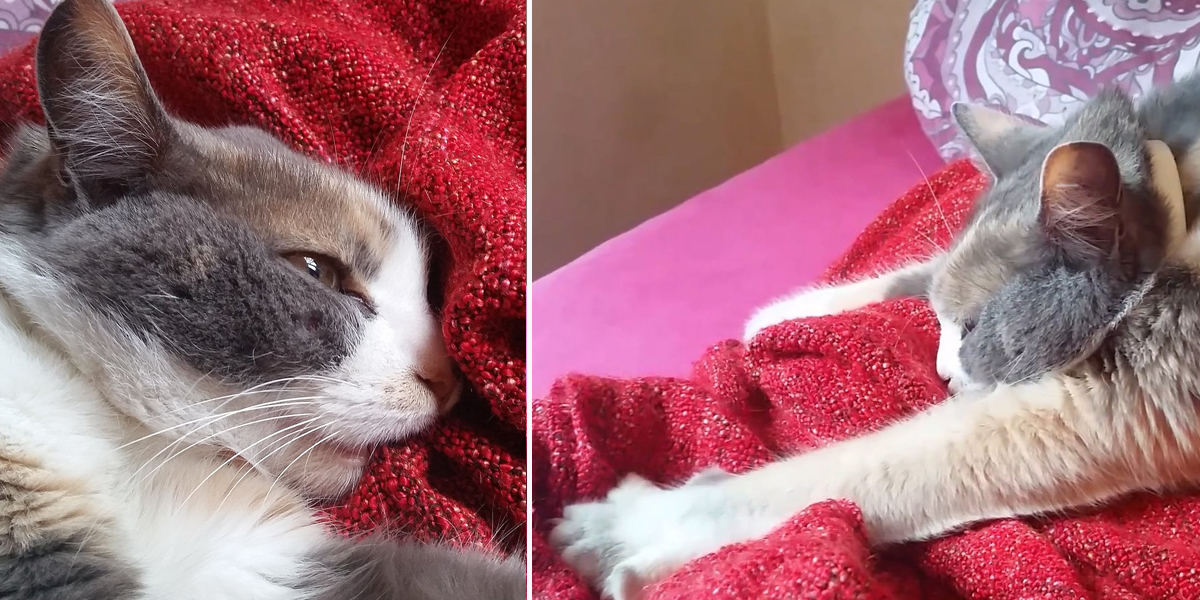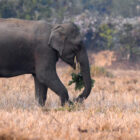What is Pica behaviour?

Pica behavior manifests in a wide array of species, encompassing domestic pets, captive animals, and even some wild creatures. From dogs and cats to elephants and horses, instances of animals ingesting items such as rocks, soil, fabric, and even metal have been documented.
Why do animals engage in such seemingly unusual and potentially harmful behavior?
Unraveling the Causes
Environmental factors, nutritional deficiencies, and psychological stressors are among the leading contributors for pica. For domestic pets, boredom or anxiety may drive them to chew on non-food items, while in the wild, the reasons can be more complex, linked to survival strategies and adaptations.
Boredom and Stress
Domestic pets, confined within the limits of homes or yards, may succumb to boredom and stress. In their quest for mental stimulation or as a coping mechanism, animals may resort to chewing or ingesting non-food items.
Limited Environmental Enrichment
Captive animals, whether in zoos or research facilities, may exhibit Pica behavior due to the lack of adequate environmental enrichment. Animals in the wild engage in a variety of activities such as foraging, hunting, and exploring vast territories. The absence of these natural behaviors in captivity may lead to a compensatory search for stimulation, often expressed through the consumption of non-nutritive substances.
Anxiety and Fear
Animals, both domestic and wild, may resort to Pica behavior as a response to anxiety or fear. In the wild, environmental threats or the presence of predators can trigger stress-induced behaviors. Similarly, domestic pets may turn to non-food items as a coping mechanism in response to changes in their environment or routine.
Obsessive-Compulsive Disorder (OCD)
Pica behavior shares similarities with obsessive-compulsive disorder in humans. Animals may repetitively engage in the consumption of non-nutritive substances as a result of compulsive tendencies.
Evolutionary Survival Strategies
In the wild, Pica behavior may have evolutionary roots linked to survival strategies. Some animals may have developed the ability to ingest certain substances as a means of self-medication or to extract vital nutrients not readily available in their primary food sources.
The Nutritional Puzzle
Pica behavior often arises from nutritional deficiencies, compelling animals to seek unconventional sources to supplement their diet. Whether it’s minerals, vitamins, or specific nutrients, the instinct to fulfill these requirements can drive animals to ingest materials that, from a human perspective, seem entirely inappropriate.
Minerals and Micronutrients
Certain minerals, such as iron, zinc, or calcium, play pivotal roles in an animal’s health. In instances where these essential elements are lacking in their regular diet, animals may resort to consuming rocks, soil, or even objects rich in these minerals.
Fiber and Digestive Health
For herbivorous animals, the need for fiber is paramount for proper digestion. Inadequate fiber intake can lead to gastrointestinal discomfort, prompting animals to seek alternative sources of roughage.
Protein and Amino Acids
Protein is a fundamental building block for the body, and its deficiency or imbalance can lead to a myriad of health issues. Animals may exhibit Pica behavior in an attempt to address protein or amino acid deficiencies.
Fat and Energy Requirements
Exploring how fat contributes to an animal’s energy needs unveils another layer of the nutritional puzzle. Animals seeking additional energy sources may resort to consuming items that offer caloric value, even if these items are not part of their natural diet.
From Domestic to Wild: Case Studies
In the realm of animal behavior, the phenomenon of Pica extends its curious tendrils across a myriad of species, blurring the lines between domesticity and the wild.
Domestic Companions: Unveiling the Quirks of Pets
The Quirks of Pets
Boredom and stress often play a significant role in canine Pica behavior. Dogs, especially those left alone for extended periods, may engage in exploratory chewing as a means of alleviating boredom or anxiety. Lack of mental stimulation, insufficient exercise, or a dearth of interactive toys can lead dogs to seek alternative forms of entertainment, often manifesting as Pica.
Additionally, certain medical conditions or nutritional deficiencies can contribute to this behavior in dogs, highlighting the importance of a comprehensive veterinary assessment to rule out underlying health issues.
In the feline realm, Pica behavior can be linked to various factors, including dental issues, nutritional deficiencies, or an innate drive to engage in predatory behaviors. The texture of certain non-food items may mimic the crunchiness of prey, enticing cats to explore and chew on these items.
Expanding our focus to include smaller pets such as birds or rodents, we find that Pica behavior is not limited to mammals. Birds, renowned for their vibrant plumage and melodic tunes, may engage in Pica by chewing on cage bars, toys, or even their own feathers. Similarly, small rodents like rabbits or guinea pigs may display a penchant for gnawing on objects beyond their usual diet of hay and pellets.
Wildlife Wonders: Unusual Dietary Choices in the Wild
Among the giants of the animal kingdom, elephants stand out not only for their immense size but also for their intriguing dietary habits. In certain regions, elephants have been observed actively seeking out and consuming clay. The motivations behind this behavior are not entirely clear, but scientists posit that the clay may provide essential minerals like sodium and help neutralize toxins present in their diet.
High in the canopies of tropical rainforests, parrots exhibit a behavior known as geophagy, the intentional consumption of soil. The minerals obtained through this behavior are thought to supplement their diet, particularly aiding in the detoxification of certain plant compounds.
In the woodlands, deers, typically herbivorous grazers, occasionally showcase a proclivity for bone consumption. This behavior, known as osteophagy, raises questions about the nutritional motivations behind such unconventional choices. By examining the mineral composition of bones and the potential benefits they confer, researchers aim to unravel the mysteries surrounding this behavior.
Deep within the rainforests of South America, certain primate species exhibit a behavior known as geophagy at specialized sites called clay licks. This communal activity involves multiple individuals converging at specific locations to consume clay. Scientists believe that the clay in these locations provides essential minerals and aids in neutralizing toxins derived from their fruit-heavy diet.
Marine Marvels: Sea Creatures with Unconventional Palates
One of the most alarming aspects of marine Pica behavior involves the ingestion of plastic debris by various sea creatures. From sea turtles confusing plastic bags for jellyfish to seabirds mistaking colorful bits of plastic for food, the consequences of human-induced pollution are vividly illustrated. Filter-feeding marine organisms, such as baleen whales, plankton-eating fish, and certain species of sharks, also inadvertently consume microplastics while feeding.
Beyond the plastic predicament, some marine species exhibit Pica behavior driven by mineral deficiencies. Sea turtles, for instance, have been observed ingesting rocks and other mineral-rich materials, possibly to supplement their diet.
Parrotfish, with their vibrant colors and distinctive beaks, are known for their pivotal role in maintaining coral reef ecosystems. However, some species of parrotfish exhibit Pica behavior by nibbling on coral structures.
THINGS DOGS EAT: THE PROBLEM WITH PICA IN PETS










